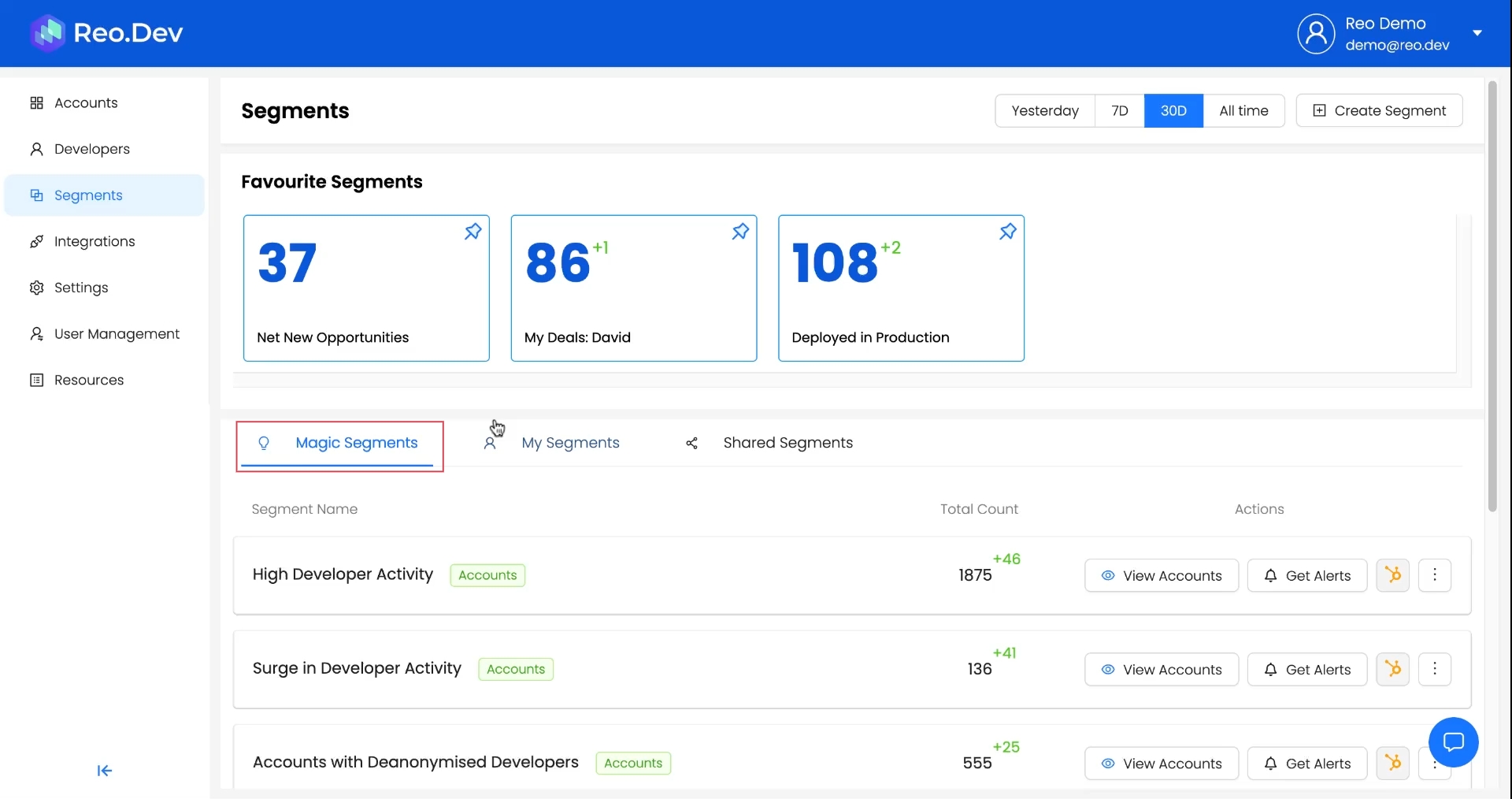Magic Segments
When you're starting out with Reo.Dev and want to quickly act on the data, Magic Segments on the Segments page are an excellent place to begin.
Magic Segments are pre-built by Reo.Dev to help you easily identify high-intent accounts in no time.

There are seven prebuilt segments:
High Developer Activity: This segment identifies accounts with developers who are frequently active on product assets. It's worth your sales team's attention to spot potential sales opportunities.
Surge in Developer Activities: This segment shows all the accounts where there has been a spike in developer activity. This could indicate a heightened interest in your product.
Accounts with De-anonymized Developers: This segment displays only those accounts where developer profiles have been de-anonymized.
In Pipeline with High Developer Activities: These are accounts in your CRM showing frequent, recent, and high-intent developer activities. Your sales team should consider these accounts for potential sales opportunities.
Accounts Active on GitHub and Docs: Accounts in this segments have done activity on GitHub and Doc. Activities on cross-functional channels most likely suggests high interest in your product.
Buying Stage: Evaluation: Developers of accounts in this stage have identified a problem and are seeking a solution like yours. Your marketing team could nurture these accounts to build confidence in your product.
Buying Stage: Building POC: Developers of accounts in this stage are experimenting with your features and building proofs of concept. Keep an eye on these accounts as they show high interest in your product.
Last updated
Was this helpful?

